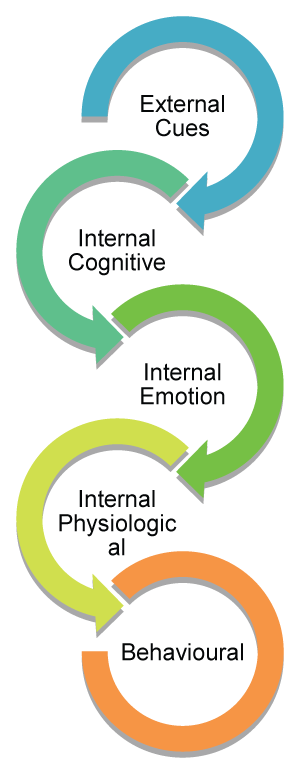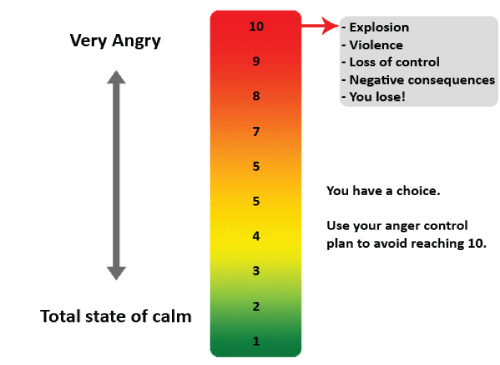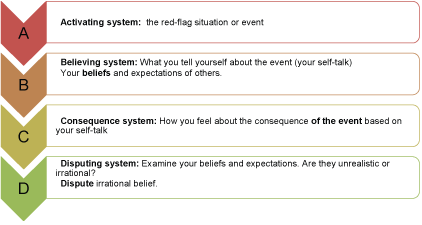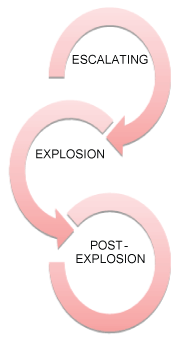There is usually a public misconception between anger, aggression, and hostility. Anger is a sense of emotion that ranges from the standard reaction of mild irritation to the intense response of fury and rage. Anger becomes a dilemma if it felt too intensely, frequently, expressed inappropriately and associated with extreme physical/mental strain on the individual. On the other hand, aggression is an often-violent behavior that causes harm or injury to another person or property. While, hostility, is a set of attitude and judgement that motivates aggressive behaviors [1].
The purpose of the paper presentation is to develop, control and transform negative thoughts to enable you to stop feeding pain and bad emotional habits. Consequently, uncontrolled anger can create problems at work, personal relationships, and overall excellence in life. Untreated outrage may lead to a terrible feeling of unpredictable and influential emotion [1].
There are different kinds of anger expression; if the client has depressed and permanent anxiety status and unknowingly complains about their state of anger (Buried anger). While another rage presentation is trying to suppress and hide anger from their surrounding (Hidden anger). Whereas, impulsive outrage demonstrates a short temper and frequent explosive bursts of violence. Intentional outrage is the passion used deliberately to frighten, offend and bully others. Similarly, habitual anger is the use of aggressive and often violent emotion in everyday life. On the other hand, defensive outrage is the use of passion as a defense skill to protect against hurtful comment or experience while righteous anger is the source of excitement that is moral and can be justified [2].
Anger consists of five different interacting events: external events, internal cognitive events, internal emotional events, internal physiological events, which ultimately lead to behavioral reactions (Figure 1) [3-5]. However, much individual/public harm and cost can arise from inappropriate expression of anger [6].
 Figure 1: Anger consists of 5 interacting events. View Figure 1
Figure 1: Anger consists of 5 interacting events. View Figure 1
There is an issue of anger occurring in early childhood, continuing into adolescence and persisting through to adulthood [7]. Many anger patients have a variety of other problems such as drug, alcohol and or smoking abuse, complaints from multivalent psychosomatic pathology, which, frequently leads to aggressive or violent behavior [7].
The visible results of anger expression are either tension release or temporary control of people, but there is also the devastating adverse effect on the physical, cardiac or carcinogenic impact that either conveys anger or suppresses it [8].
Anger expression is not an inherited trait; it is a learned behaviour. Effective anger management involves changing the perception that rage should lead to aggression, while the motive of expressing anger in a more constructive, productive, and assertive way can control anger escalation by stopping hostile self-talk, and negative, irrational beliefs [1,8].
There is a dissimilarity between aggressiveness and assertiveness, the objective of an aggressive person is to win by being dominating, frightening, or injuring another person. Conversely, assertiveness aims to respect people and express feelings of anger by minimizing emotional harm. Most of the time, aggressive anger expressions will reinforce aggressive behavior. Aggression is a chronic maladaptive habit of anger expression, so we need to break the aggression cycle habit by recognizing early trigger signs of anger escalation. Is it a personal choice to control anger or is it a significant loss of self-control? Moreover, to find out if there is a negative consequence of aggression escalation [9].
The Patient also needs to admit that he/she has had anger spells and disclosed that anger is a problem. Also, the patient needs to measure and monitor the degree of severity of rage on an anger thermometer (anger meter). On a sliding scale ranging from a score of 1 to 10; a score of 1 indicates a calm state, while a score of 10 demonstrates a very angry and explosive loss of control and suffers negative consequences (assaults others, aggressive unresponsive behaviour, arrested by the police) (Figure 2) [10].
 Figure 2: The anger meter (The anger thermometer) from 1 to 10. View Figure 2
Figure 2: The anger meter (The anger thermometer) from 1 to 10. View Figure 2
There is always a lag point for anger escalation as it moves up the scale, it provides the patient with the chance to learn and practice practical coping skills, to stop anger from escalating to a 10 [10].
Anger triggers are specific events that provoke anger escalation; these sensitive red flags may continuously recall. The anger triggers vary from person to person, what triggers anger in one person, may not necessarily unleash anger in another person [1,10].
There are four essential signals of an anger-provoking event. These signs are divided into physical (physiological), cognitive (thought), emotional (feeling) and behavioral (act). However, physical which means how the body responds to anger (e.g. increased heart rate, flushed face, hot feeling, chest tightness, and boiling sensation). While emotional cues describe the person's attitude to anger (e.g. expressing fear, hurt, jealousy, disrespect), also, cognitive signals indicate what a person thinks in response to anger (e.g. conveying hostile self-talk, images of aggression and revenge). While behavioural cues are the person's reaction to anger (e.g. making fists clench, raise voice tone, and stare looking) [1,10].
A. Immediate strategies: includes several methods that patients can practice before anger escalation; timeouts, relaxation, talking to a friend (someone you trust) and the thought to stop.
B. Preventive strategies: includes developing a regular exercise program and changing irrational beliefs by using the A-B-C-D model.
C. Knowing the aggression cycle (escalation-explosive-post-explosive phases).
D. Using the conflict resolution model to express anger.
E. Using the assertive model to express anger.
F. Exploring primary feelings beneath the anger.
Timeouts describe leaving a scene that has provoked anger, stopping an argument or discussion, taking a few deep breaths, going for a walk, calling a trusted colleague or family member, and thinking rather than reacting. The use of family or coworkers' timeout is by having an agreement or a prearranged plan in the heat of the moment [11].
A timeout is also useful when used with other strategies. For example, can the person take a timeout? Can the person adopt any other anger control method? These additional plans help the person to remain calm during a timeout [11].
Patients can control anger by focusing on deep breathing, to release and let go of internal tension. Deep breathing exercise begins by choosing a comfortable chair, looking down, closing the eyes, concentrating on the lower part of your body, starting from the feet. Now try to vent the anger by taking deep breaths and going up till it reaches the head. Concentrate on deep breathing by fully inhaling air, holding your breath, and then wholly exhaling through your nose and then concentrate on the lungs as you exhale. Try progressive muscle exercise to keep the pressure at maximum and then, release the tension. Tense the fists, forearms, and biceps, and then raise both shoulders toward ears. Tense neck, jaw, forehead and face and suddenly tense chest and abdominal muscle and then to do tense feet muscle [1,11].
Vent with close friends and family by explaining your feelings to other people and seeking their opinion [11].
Stop negative thinking. It requires constant practice, to prevent harmful and hostile "self-talk thoughts to control firing emotions and try to exercise and calm down frequently [11].
Ensure you start a regular exercise routine, if the dominant feeling is anger, do some brisk walking or engage in enjoyable physical activities. Exercises help in releasing endorphin and relieving tension [11].
Change irrational beliefs; by challenging, and changing irrational beliefs to rational belief, using the A-B-C-D Model (rational-emotive model) (Figure 3) [11].
 Figure 3: Changing Irrational Beliefs by Using A-B-C-D Model (rational-emotive model) [11]. View Figure 3
Figure 3: Changing Irrational Beliefs by Using A-B-C-D Model (rational-emotive model) [11]. View Figure 3
Changing irrational belief of controlling everything, pleasing everybody, besides treated fairly by everyone, and to have the approval of everyone to a rational belief "I have no power over things I cannot control", or "I have to accept what I cannot change". "I cannot please everyone; some people are not going to approve of everything I do", "I cannot be expected to be treated fairly by everyone". This rational belief will, in turn, create a healthy internal dialogue of self-talk that is more rational and adaptive [11].
This consists of three phases: Escalation, Explosion, and Post Explosion (Figure 4).
 Figure 4: Phases of the aggressive cycle. View Figure 4
Figure 4: Phases of the aggressive cycle. View Figure 4
The patient should recognize the early warning signs and symptoms of the escalating period to prevent reaching the explosion, aggression phase at an early stage. If anger is building up, it will worsen to the explosion phase which is manifested by an irrepressible anger release, which is often exhibited as verbal abuse or physical aggression, threats, or violent acts. The post-explosion phase is characterised by the negative consequences of the explosion, which negatively impacts social life, family relationship, friend rapport, work collegiality; notify police, damage to property, and feelings of guilt, shame, and regret [11].
Unhealthy conflict management can lead to negative emotions; wounded feelings, discomfort, frustration, irreparable cracks, anger, bitterness, emotional scars and break-ups. On the contrary, when conflict is resolved positively, it increases understanding between partners, builds trust, and reinforces strong relationship bonds [11].
Below are 16 Steps for effective assertive conflict resolution to address an escalating situation [1,11].
1. Don't respond too quickly to avoid negative communication.
2. Understand innate anger and identify accompanied feelings before you undertake any action. First, ask yourself if it's an appropriate and justified reaction to the situation? Alternatively, is it caused by something from the past?
3. Manage innate stress quickly, however, remain alert and calm.
4. Pay attention to the spoken and unspoken feelings of others.
5. Ensure realistic thinking about the rights of you and others, and decide on what you want to do, to say and what's fair to all parties or being the target of a confrontation. Seek the second opinion from a third party.
6. Plan for a successful meeting by picking an appropriate time and place where; both parties feel comfortable and where there are enough privacy and no interruption.
7. Identifying the specific problem that gives rise to conflict.
8. Determining whether to resolve the conflict or let it go by first asking if it is essential to bring it up?
9. Control your temper, emotions and negative behaviour without intimidating, frightening, or punishing others.
10. Don't let an aggressive tone distract you from the main message; divert attention by observing the tone of the voice to have an effective communication to avoid provoking defensiveness and hostility.
11. Addressing and resolving the conflict by scheduling a time to speak about the issue, describe how do recognize it and how it can be determined.
12. Maintain positive verbal and body language. Being assertive means respecting the rights of others and valuing the dignity of others. Don't let passive or nervous body language weaken the positive message being projected. By being calm, you can maintain eye contact, speak clearly and slowly.
13. Use 'I' Statements Instead of 'You' Statements. By using a clear statement of facts, ''I'' statements are perceived to be less hostile than ''you'' statements which is more inflammatory and can lead to nonproductive disagreeing discussion.
14. Don't talk too much and learn to listen attentively. Put your personal feelings aside and try to understand the point of view of the other person.
15. Ensure you respect the differences and views of others. By avoiding rude words and actions, you can almost always resolve a problem faster.
16. End the meeting with a 'Thank You' Whatever the outcome, thank the other person for taking the time to meet with you.
The patient needs two crucial core skills to successfully manage conflict; first, the ability to decrease their own stress, second, to remain calm, even during an argument or perceived attack, in other to stay stable, attentive, and in control. If the person is very stressed, he/she may be unable to interpret the other person's nonverbal communication, unable to hear attentively, unable to be aware of the other person's feeling and the likes [1,11].
The patient needs two crucial core skills to successfully manage conflict; first, the ability to decrease their own stress, second, to remain calm, even during an argument or perceived attack, in other to stay stable, attentive, and in control. If the person is very stressed, he/she may be unable to interpret the other person's nonverbal communication, unable to hear attentively, unable to be aware of the other person's feeling and the likes [1,11].
The patients will response to conflict either in healthy or unhealthy way of resolving the conflict (Table 1).
Table 1: Healthy and unhealthy ways of dealing and resolving conflict. View Table 1
Sometimes, the patient reacts passively, or suffers silently or act in a nonassertive manner or become very angry with themselves and with trivial things from others.
The patient should act assertively with regards to their rights and the rights of other people's feelings, thoughts, and beliefs; it is a learned skill and not inherited [1,11].
The patient should understand their passion, emotion and the underlying causes, not blaming others for his/her anger. Consider the unhealthy, accumulated, and unresolved past conflicts, recognize their permanent emotional scars from their lousy experience from others. Searching for actual causes is of paramount importance for the source of anger, frustration, and unhappiness from unskilled conflict management [1,12].
Use of Cognitive Behavioral Therapy (CBT) and Cognitive Therapy (CT) as an approach to control anger; the treatment aims to help individuals to identify, interpret and use healthy reaction to manage their anger. CBT approaches have many successful and proven uses in reducing violence in various populations [12,13].
The patient will become more aware of better recognition and understanding of anger-provoking stimuli, enhance healthy automatic response to emotional experience, hence an improved attitude towards dealing with internal and external cues to anger [4,13].
The patients are trained to use avoidance or to try to engage in other activity to lessen or remove provocative anger state and in reducing their role in angry outbursts (e.g. leaving the room or engaging in physical, mental and behavioral distraction) [4,13].
The patients are trained to use self-control and learning multiple organized anger relaxation methods. Developing calmness by visualizing anger scenes and use a combination of habitual relaxation coping skills effective in reducing anger and general anxiety [4,13].
Here the approach in generating interest in self-instruction training. SIT has some steps; first, make an anger diary and record anger frequency, intensity, cues and triggers [14,15].
Secondly, try to explore errors and false belief in the clients' thinking, third, arousal reduction techniques by using many relaxation methods. Fourth, use training in behavioral coping skills, finally, the use of rehearsal and transfer activities [15].
Improve patient's social and behavioral skills by improving anger management and conflict management. These skills are effective in reducing negatively reinforced responses from immoral anger management [15].
Problem-Solving (PSS) is an established methodology to solve a problem, it includes; problem description, creating alternative courses of multiple solutions, implementing the best available solution. It encourages patients to develop a systematic appraisal of Aggression Replacement Training (ART) [16,17].
A "recognition" phase; that patient's difficulties and their unhelpful coping mechanisms will be understood. A "revision" stage, where the patients, are trained on alternative strategies. A "termination" stage is considered, and an ending is facilitated [18-20].
The patient needs to admit that he/she has an anger problem and needs to work on it. The patient should learn timeouts, breath exercises and practice progressive muscle relaxation. Also, the patient must identify the trigger and signs of anger, and not ignore the feeling of anger. Patients should constructively vent their anger and seek professional help.
None.
None.
None.